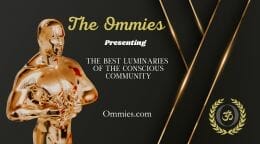A Children’s Soul Study

by John DiPrete
In an unpublished double-blind study, journalists for Mind Bluff asked thirty-five children to draw a portrait of their souls. The study was informal, the subjects ranging in age from four to ten. The journalists asked children to depict what they thought their souls looked like. Later, the images also had similar content.
How Was The Soul Study Set Up?
The children in the experiment consisted of boys and girls, selected at random over a three-month period. The members of the tested sample came from all walks of life, various religious backgrounds, and diverse ethnicities. No one prepared the children ahead of time. None of the researchers defined the term “soul” or referred to what it might look like.
The tested children were expected to use their imaginations to determine what constituted a soul. None of the children asked what a soul was. Perhaps the topic was presented to them on prior occasions, through the auspices of their church, mosque, or synagogue. There was no evidence to suggest that the subjects saw a visual depiction of the concept beforehand.
What Did the Children’s Drawings Show?
While the shapes depicted in the collection were not completely identical, the rounded curves and colors exhibited a consensus of similar appearance. Most of the shapes had an ethereal quality, not unlike a cloud’s texture. Drawn on a white sheet of paper, all of the shapes were colored white, or left uncolored. (The crayons and pencils the subjects used offered a range of colors to choose from). The souls often appeared “suspended” in mid-air, as opposed to “sitting” or resting at the bottom of the paper. The backgrounds were often left blank and uncolored. More often than not, the drawing represented no other person or item.
Additionally, most drawings had abstract shapes, like clouds or hazy ellipses. They did not, in themselves, represent a person, place, or object. Several of the pictures seemingly possessed some elements resembling vague heads or fuzzy limbs, but the vast majority of images were completely amorphous.
>
How Can We Explain the Soul Study Results?
Possible reasons for the similarities: psychologically, children (and adults) express shapes in customary fashion. Sharp lines signify anger; soft lines depict serenity. Children may imagine the soul graphically in calming, graceful tones (i.e., smooth curves, etc.).
An alternate explanation: children can “see” in psychic realms, alien to adults. Their casual images reveal the soul’s true appearance — as light-filled membranes or halos.
Some final thoughts to keep in mind: Imagination can filter ideas from the mind’s collective unconscious, a deep mental well of thoughts and feelings. Psychologist Karl Jung proposed that the entities in this realm take the form of symbols or icons (known as archetypes), which give life meaning. Often these symbols represent images of iconic significance. For example: Icons of light, magic, and flight. In that respect, floating souls in radiant white could be universal standard-bearers (i.e., archetypes) regarding our inborn spiritual instincts. If that is the case, who better than children, fresh in thought and nature, to tap into such instincts?
Soul Study Conclusion
While not a scientific proof of the soul, the children’s shared imaginings of a real or conceptual force (unseen to the eyes) suggest an interesting interface where coincidence and intuition meet.
About the Author
John DiPrete is a web designer with a passion for neuroscience, art, and business. His work has appeared in Macworld, Perceptual and Motor Skills, Medical Hypotheses, and Speculations in Science and Technology, among other outlets. His website (www.MindBluff.com) is recommended by PC World Online.
OMTimes Magazine is one of the leading on-line content providers of positivity, wellness and personal empowerment. OMTimes Magazine - Co-Creating a More Conscious Reality









